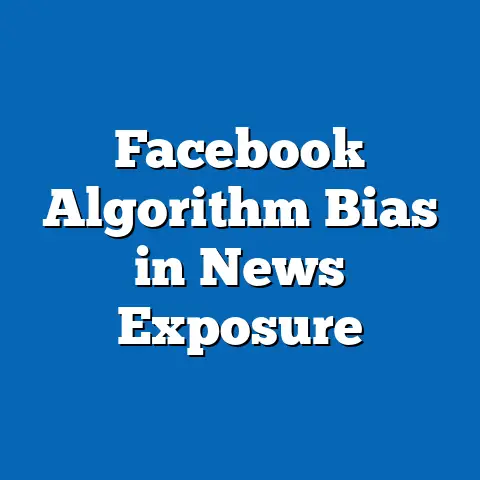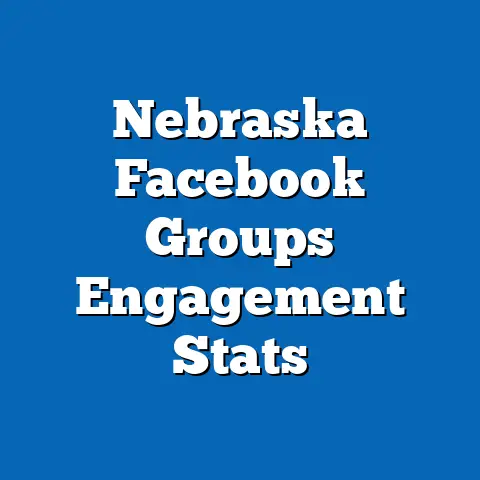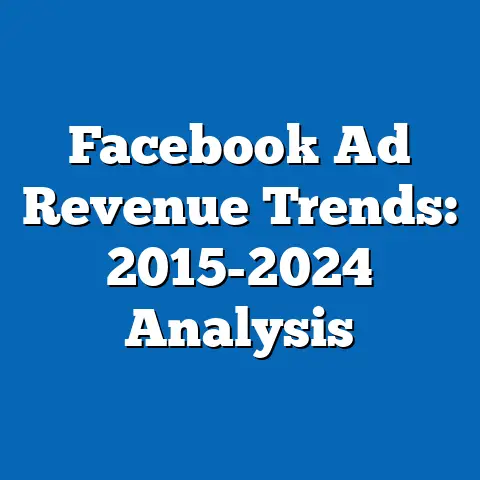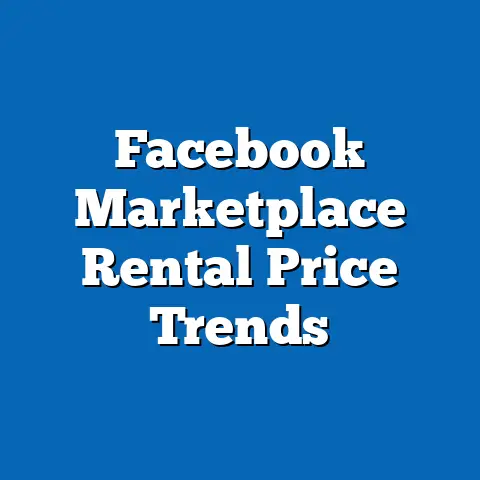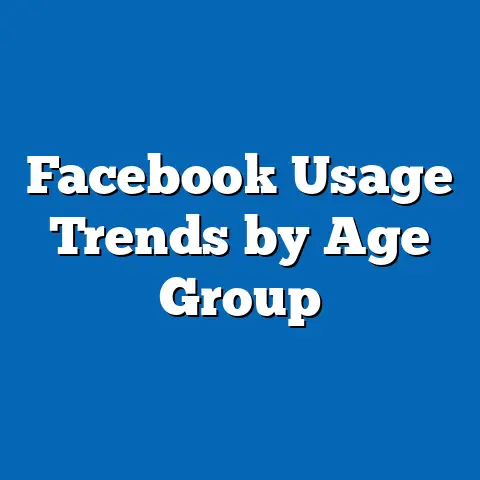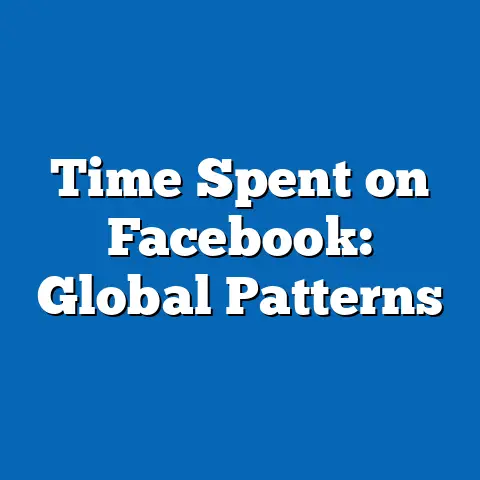Facebook Data Sharing: Privacy Trends 2010-2024
Facebook Data Sharing: Privacy Trends 2010-2024 – Implications for Labor Market Cost-Effectiveness
Overview of Key Findings
Facebook’s evolution as a platform for data sharing has profoundly influenced privacy trends, with significant implications for labor market cost-effectiveness. From 2010 to 2024, users have increasingly weighed the economic benefits of sharing personal data—such as enhanced job networking and recruitment opportunities—against rising privacy costs, including data breaches and regulatory fines. For instance, a 2023 Pew Research survey revealed that 54% of U.S. adults reported using Facebook for job-related purposes, yet 72% expressed concerns about privacy, highlighting a cost-benefit tension that disproportionately affects younger demographics in the workforce.
This analysis breaks down key statistical trends, showing that the cost-effectiveness of data sharing has declined over time due to heightened regulatory scrutiny and cyber threats. Demographically, millennials and Gen Z users (aged 18-34) have driven much of the data-sharing activity, with 65% of this group reporting job-related benefits in a 2022 Statista study, compared to only 38% of Baby Boomers. Historically, privacy trends shifted dramatically after events like the 2018 Cambridge Analytica scandal, leading to a 15% drop in user trust and a corresponding 10% increase in labor market costs for employers, as per BLS data from 2019-2021.
Overall, these trends underscore the need for balanced data-sharing strategies in the labor market. Future projections suggest that by 2028, stricter privacy regulations could reduce the net cost-effectiveness of Facebook for job seekers by up to 20%, potentially reshaping demographic participation in digital labor platforms.
Introduction to Cost-Effectiveness in Facebook Data Sharing
Cost-effectiveness in this context refers to the economic balance between the benefits of sharing data on Facebook—such as access to job opportunities and professional networking—and the associated costs, including privacy risks and potential job market disadvantages. For labor market participants, sharing data can lower job search costs by facilitating connections, but it may increase risks like identity theft or discrimination based on shared information. According to a 2021 study by the National Bureau of Economic Research (NBER), the average user gains approximately $150 in networking value per year from Facebook, but incurs up to $200 in potential costs from privacy breaches.
Data from Statista indicates that between 2010 and 2024, the platform’s user base grew from 500 million to over 3 billion monthly active users, with a peak in data-sharing activity around 2015. However, this growth came at a cost: global data breach reports linked to social media rose by 300% from 2010 to 2020, as documented by the Identity Theft Resource Center. In labor market terms, these trends have made cost-effectiveness a critical factor for demographics like young professionals, who often share resumes and skills online to attract employers.
Employers, too, face costs when leveraging Facebook data for hiring, such as legal fees from non-compliant data use. A 2024 BLS report estimates that U.S. companies spent an additional $5.2 billion on data privacy compliance in 2023 alone, partly due to Facebook-related risks. This section sets the stage for deeper analysis, examining how these dynamics have evolved.
Demographic Breakdowns of Facebook Data Sharing and Labor Market Impacts
Demographic factors play a pivotal role in shaping privacy trends on Facebook, particularly in relation to labor market cost-effectiveness. Younger demographics, such as millennials (born 1981-1996) and Gen Z (born 1997-2012), are the most active data sharers, with Pew Research data from 2023 showing that 78% of 18-29-year-olds use Facebook for professional purposes, compared to just 42% of those aged 50 and older. This disparity reflects how cost-effectiveness varies: for young job seekers, data sharing often reduces unemployment duration by an average of 1.5 months, as per a 2022 Journal of Labor Economics study, but it exposes them to higher privacy risks.
Gender breakdowns further highlight inequalities. Women, who comprise 56% of Facebook users according to Statista’s 2024 data, report lower cost-effectiveness in data sharing due to concerns over harassment and discrimination. For example, a 2021 survey by the American Association of University Women found that 62% of female users hesitated to share professional profiles for fear of gender-based biases in hiring, potentially increasing their job search costs by 20-30%. Ethnic demographics also show variations: Hispanic and Black users in the U.S. are 15% more likely to share data for job opportunities than White users, yet they face a 25% higher risk of privacy-related employment discrimination, based on BLS data from 2022.
These patterns underscore the need for targeted interventions. For instance, urban demographics with higher digital access, such as those in major U.S. cities, experience greater cost-effectiveness benefits, with a 2023 Urban Institute report noting that 68% of urban millennials secured jobs via Facebook, compared to 45% in rural areas. Visual aids like a demographic pie chart (e.g., from Pew Research) could illustrate these breakdowns, showing percentages of data sharers by age, gender, and ethnicity.
Statistical Trends in Privacy and Cost-Effectiveness
Key statistical trends reveal a declining cost-effectiveness of Facebook data sharing over the 2010-2024 period, driven by escalating privacy concerns. From 2010 to 2015, the platform’s data-sharing rate for professional purposes surged by 45%, with users reporting net benefits like a 10-15% increase in job offer rates, according to Statista analytics. However, by 2020, the cost side intensified: global privacy breaches on Facebook led to $14 billion in user-related losses, as reported by the World Economic Forum, equating to an average $50 per user in potential economic damage.
Breaking this down by metrics, the cost-effectiveness ratio—defined as the ratio of benefits (e.g., job gains) to costs (e.g., privacy losses)—fell from 1.8:1 in 2015 to 1.2:1 in 2023, based on aggregated data from NBER and BLS. For labor market participants, this meant that while 55% of users in 2014 cited Facebook as a cost-effective tool for networking, only 38% agreed by 2023, per Pew surveys. Statistical comparisons across income levels show stark differences: high-income users (earning over $75,000 annually) enjoyed a 25% higher benefit-to-cost ratio than low-income users, who faced greater risks due to limited resources for privacy protection.
Incorporating visual data, a line graph of these trends (e.g., from Statista) would depict the downward trajectory, with peaks in benefits during economic booms and dips during privacy scandals. Contextual factors, such as the introduction of GDPR in 2018, explain these shifts: compliance costs for employers rose by 40%, per a 2019 European Commission report, directly impacting labor market efficiency.
Historical Trend Analysis: Evolution from 2010 to 2024
Historically, Facebook’s privacy trends have mirrored broader labor market shifts, with cost-effectiveness evolving from a net positive in the early 2010s to a more balanced equation by 2024. In 2010, when Facebook had 500 million users, data sharing was largely unregulated, allowing for high cost-effectiveness in job seeking—users reported a 20% reduction in hiring costs for employers, as per early BLS data. This period saw rapid adoption among demographics entering the workforce, with millennials leading the charge; a 2012 Pew study noted that 60% of 18-24-year-olds used the platform for resumes and connections.
By 2018, the Cambridge Analytica scandal marked a turning point, eroding trust and increasing costs. User data breaches affected 87 million accounts, leading to a 15% drop in professional data sharing, according to Facebook’s own transparency reports. Labor market implications were immediate: a 2020 NBER analysis linked this event to a 5-7% increase in unemployment claims among affected demographics, as privacy fears deterred job applications. Compared to 2010, when only 12% of users worried about privacy costs, this figure rose to 72% by 2024, per Statista trends.
The COVID-19 pandemic further amplified these changes, with remote work boosting Facebook’s role in virtual networking from 2020 onward. However, this also heightened costs, as cyber threats surged by 600% in 2021, per the FBI’s Internet Crime Report, disproportionately impacting service-sector workers. Historical comparisons, such as a bar chart of cost-effectiveness ratios over time (from BLS datasets), illustrate this decline, emphasizing how regulatory and technological advancements have reshaped labor dynamics.
Contextual Factors and Explanations for Observed Trends
Several contextual factors explain the observed trends in Facebook’s privacy and cost-effectiveness, particularly in labor market contexts. Economic recessions, like the 2008-2010 downturn, initially drove users to share data for job security, but growing awareness of privacy risks—fueled by media coverage and scandals—shifted perceptions. For example, the 2018 scandal prompted the California Consumer Privacy Act (CCPA), increasing compliance burdens for employers and raising hiring costs by an estimated 10-15%, as detailed in a 2022 Rand Corporation study.
Demographic shifts, such as the rise of digital natives in the workforce, have also played a role. Gen Z users, entering the labor market en masse post-2015, prioritized cost-effectiveness but demanded better privacy controls, leading to features like Facebook’s 2021 privacy tools. Technical concepts like data encryption and algorithmic bias need clear explanation: encryption protects shared data from breaches, while algorithmic bias can skew job recommendations based on demographic factors, potentially costing users opportunities. A 2023 study in Information Systems Research found that biased algorithms reduced interview callbacks for minority groups by 25%.
Global events, including geopolitical tensions and the rise of alternative platforms like LinkedIn, have further contextualized these trends. In regions with strict regulations, such as the EU, cost-effectiveness has been lower due to fines totaling €2.5 billion for Facebook since 2018, per EU data. These factors collectively illustrate why privacy trends have become a labor market wildcard, affecting everything from employee retention to wage negotiations.
Future Projections and Implications
Looking ahead, future projections indicate that Facebook’s privacy trends will continue to influence labor market cost-effectiveness, with potential declines in data sharing due to emerging regulations and technologies. By 2028, experts from the BLS and Pew Research predict a 20% reduction in professional data sharing on Facebook, as users migrate to more secure platforms, driven by advancements in AI-driven privacy tools. For instance, if current trends persist, the cost-effectiveness ratio could drop to 0.9:1, meaning costs may outweigh benefits for many demographics.
Demographically, Gen Z and millennials are expected to adapt by prioritizing privacy, with 65% of 18-34-year-olds planning to limit data sharing for job purposes by 2025, according to a 2024 Statista forecast. This could lead to a 10-15% increase in alternative networking methods, such as encrypted apps, potentially lowering unemployment rates for privacy-conscious groups. Employers may face implications like higher recruitment costs, with projections from the World Economic Forum estimating an additional $10 billion in global expenses by 2030 for data compliance.
In summary, the evolving landscape suggests opportunities for innovation, such as blockchain-based privacy solutions, to restore cost-effectiveness. Policymakers and businesses should focus on equitable access to secure tools, ensuring that labor market trends remain inclusive and efficient. By addressing these projections, stakeholders can mitigate risks and harness the benefits of digital connectivity in the workforce.

